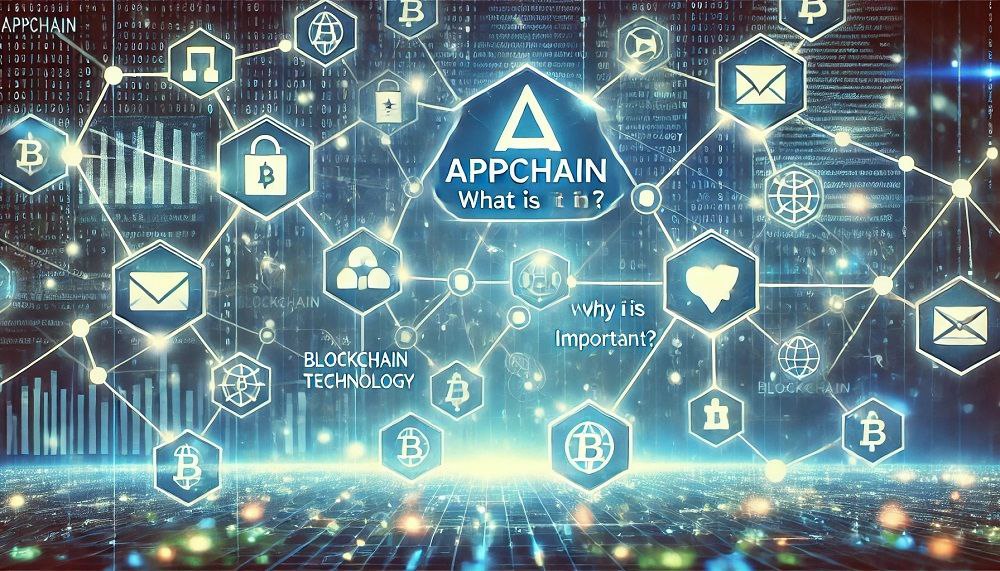The pioneer blockchain network, Bitcoin, was intended to facilitate peer-to-peer transactions. After some time, Bitcoin’s basic layer encountered difficulties sustaining high throughput and cheap transaction costs as its user base and usage increased.
Hence, continuous developments are needed to improve its scalability for regular transactions, such as the Lightning Network. Ethereum, the second-largest blockchain network by market capitalization, has experienced similar scaling problems. While Solana and other monolithic chains have demonstrated superior scalability, appchains are a more viable long-term option for attaining high throughput at low transaction costs.
What are Appchains?
An application-specific blockchain or Appchain can support a single application or a limited group of applications. Appchains are specifically designed to fulfill the requirements of certain applications, in contrast to general-purpose blockchains like Ethereum or Solana, which support many applications and smart contracts.
A fork of the original layer-1 chain could result in an appchain, a layer-2 or layer-3 chain. Developers can build on a solid foundation and save time and effort by utilizing the current codebase while introducing changes and improvements. Additionally, forking guarantees compatibility with the base chain, facilitating integration and interoperability.
Importance of Appchains
Appchains can modify the blockchain’s governance, consensus process, and design to suit certain application requirements, improving user experience and performance. Compared to general-purpose blockchains, appchains can achieve faster throughput and reduce latency by allocating resources to a specific application.
They can put application-specific security mechanisms in place, lowering the possibility of flaws in larger blockchains. Custom transaction prioritization is another feature of Appchains. They can be difficult to implement on base chains where several applications compete for transaction precedence.
Developers are granted more control over the blockchain’s features, updates, and governance, allowing for quicker innovation and requirement adaptation.
Challenges of Using Appchain
The substantial technical knowledge and resources needed to build and maintain an appchain can be a hurdle for smaller projects. Appchains must have a well-maintained infrastructure as their user base expands, which raises the expense and expertise requirements.
Interacting with other blockchains could also present difficulties for appchains. Hence, there is a need for strong bridging solutions for smooth asset transfers and communication. The Wormhole and Ronin bridge hacks demonstrate that centralization concerns are common with bridges.
Creating a compelling economic model to motivate users and validators can also be challenging, particularly for applications with tiny user populations. While the value of general-purpose blockchains rises with the number of users and apps, appchains could struggle to get the same level of community involvement.
Appchain Examples
Some Appchains have scaled successfully despite the difficulties.
Arbitrage
Over the past few years, the Ethereum layer-2 chain Arbitrum has developed a robust DeFi community. It enables a daily volume of over $200 million and a total value locked (TVL) of over $3 billion as of June 2024.
Immutable
Immutable is a layer-2 Ethereum chain created following the 2021 DeFi extension on Ethereum, focusing on the gaming environment. With over 200 projects, Immutable is the go-to chain for gaming applications. Due to its emphasis on gaming, its TVL is comparatively low, but it is a well-known platform in this market.
ZetaChain and Pythnet
Pyth Network (Pythnet) provides data that facilitates on-chain transactions. It has facilitated $4.4 billion worth of transactions since the start of 2024. Pyth was responsible for approximately $110 billion in trade activities in April 2024 alone.
Solana-built ZetaChain is a derivatives trading platform. According to DefiLlama, as of June 2024, it had a daily trading volume of over $80 million and a cumulative transaction volume of over $9 billion.
Bridging Appchain Infrastructure
Transferring assets and data across appchains and other blockchains is possible via bridging. The most common bridging options include:
Centralized Exchanges (CEXs)
CEXs enable users to move assets between several blockchains by serving as middlemen.
Decentralized Bridges
Decentralized bridges enable cross-chain transfers without a central authority through smart contracts and decentralized networks. The Cosmos Inter-Blockchain Communication (IBC) protocol and Polkadot’s parachains are notable decentralized bridges.
Atomic Exchanges
Atomic swaps allow for direct, peer-to-peer asset trades between several blockchains without using intermediaries.
Conclusion
Appchains offer solutions to many drawbacks of general-purpose blockchains through custom solutions for certain applications. Appchains can integrate seamlessly with a strong bridge infrastructure, promoting efficiency and creativity within the blockchain ecosystem.
